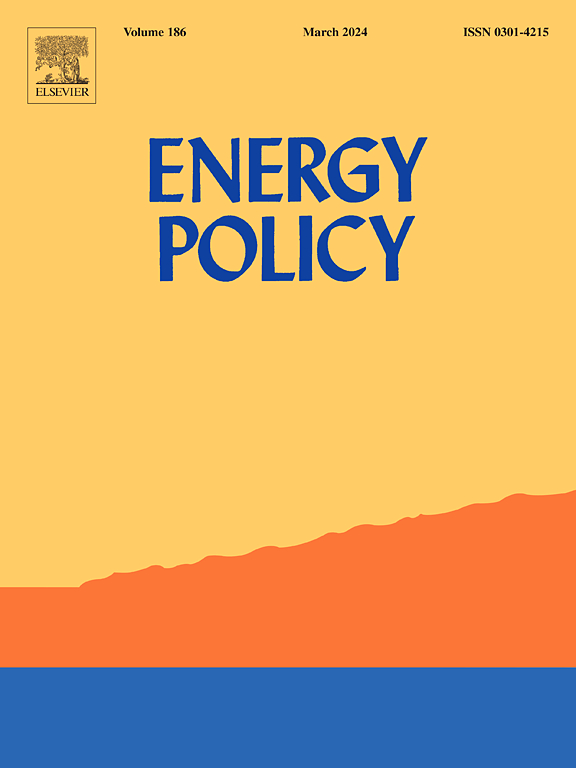Economic analysis of free & subsidized power supply versus solar PV cell subsidy towards sustainable agriculture in India - An external cost approach and policy implications
IF 9.2
2区 经济学
Q1 ECONOMICS
引用次数: 0
Abstract
India's agricultural sector receives extensive support through free or subsidized electricity for irrigation, creating long-term fiscal stress for state governments and contributing to emissions from coal-based power generation. This study presents a comparative economic and environmental assessment of subsidized electricity versus a transition to solar photovoltaic (PV) systems. Using Levelized Cost of Electricity (LCOE) modeling, the study integrates external environmental and health costs through the ExternE framework, localized for Indian conditions. A state-level cost–benefit analysis quantifies the potential savings from reduced subsidies and avoided coal generation, against the capital investment needed for PV deployment. Monte Carlo simulations using the Reserve Bank of India's 4 % ± 2 % inflation target range model long-term variability in electricity costs, enabling more realistic and risk-aware projections. Results show that solar PV becomes more economical than coal when externalities are considered, with LCOE estimates for coal rising to ₹20.49–22.41/kWh by 2045 compared to ₹7.46–8.16/kWh for solar. Most states can recover PV investment within 2.4–5.4 years. The findings support a policy shift toward capital subsidies for decentralized solar PV, offering both fiscal relief and environmental benefits. The study contributes to evidence-based policymaking for sustainable agriculture and cleaner energy transitions in India.
印度免费和补贴电力供应与太阳能光伏电池补贴对可持续农业的经济分析——外部成本方法和政策影响
印度农业部门通过免费或补贴的灌溉电力获得了广泛的支持,这给各邦政府带来了长期的财政压力,并增加了燃煤发电的排放。这项研究提出了补贴电力与过渡到太阳能光伏(PV)系统的比较经济和环境评估。该研究利用电力均等化成本(LCOE)模型,通过针对印度国情进行本地化的ExternE框架整合了外部环境和健康成本。一项州级成本效益分析量化了减少补贴和避免燃煤发电带来的潜在节省,以及光伏部署所需的资本投资。蒙特卡罗模拟使用印度储备银行4%±2%的通胀目标范围来模拟电力成本的长期变化,从而实现更现实和风险意识的预测。结果表明,当考虑外部性时,太阳能光伏发电比煤炭更经济,到2045年,煤炭的LCOE估计将上升到20.49-22.41 /kWh,而太阳能的LCOE估计为7.46-8.16 /kWh。大多数州可以在2.4-5.4年内收回光伏投资。研究结果支持对分散式太阳能光伏发电进行资本补贴的政策转变,这既能减轻财政负担,又能带来环境效益。该研究为印度可持续农业和清洁能源转型的循证决策做出了贡献。
本文章由计算机程序翻译,如有差异,请以英文原文为准。
求助全文
约1分钟内获得全文
求助全文
来源期刊

Energy Policy
管理科学-环境科学
CiteScore
17.30
自引率
5.60%
发文量
540
审稿时长
7.9 months
期刊介绍:
Energy policy is the manner in which a given entity (often governmental) has decided to address issues of energy development including energy conversion, distribution and use as well as reduction of greenhouse gas emissions in order to contribute to climate change mitigation. The attributes of energy policy may include legislation, international treaties, incentives to investment, guidelines for energy conservation, taxation and other public policy techniques.
Energy policy is closely related to climate change policy because totalled worldwide the energy sector emits more greenhouse gas than other sectors.
 求助内容:
求助内容: 应助结果提醒方式:
应助结果提醒方式:


